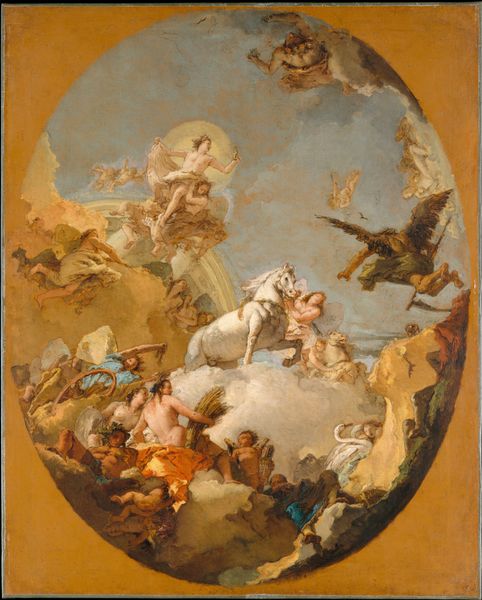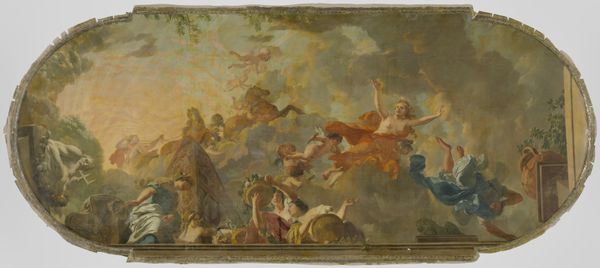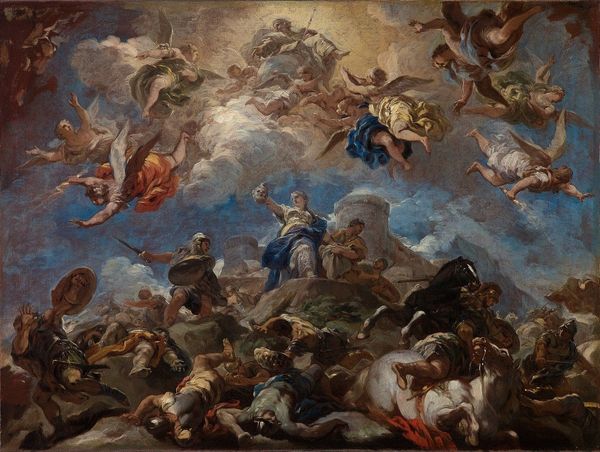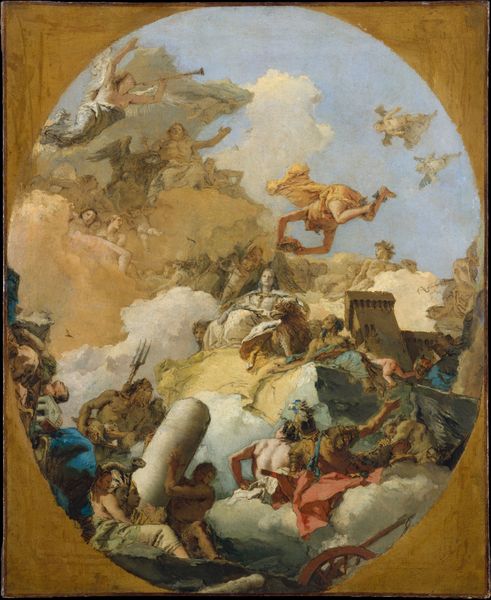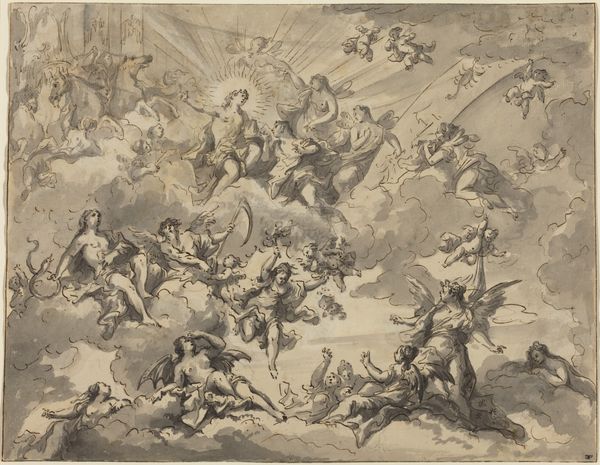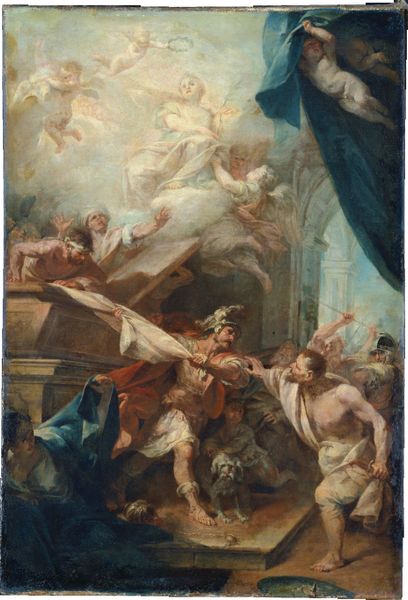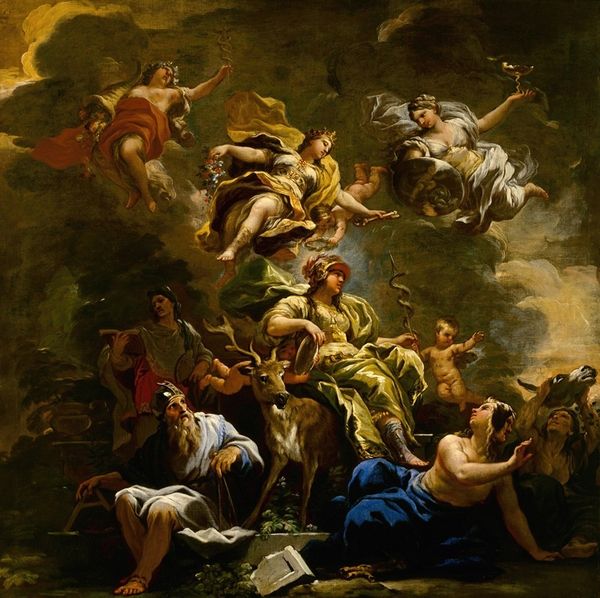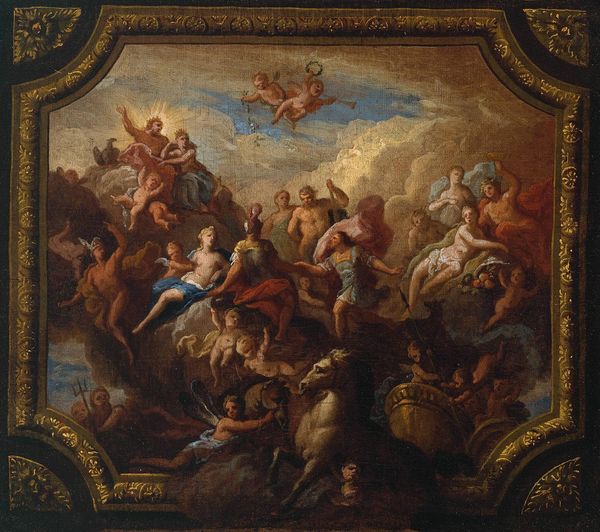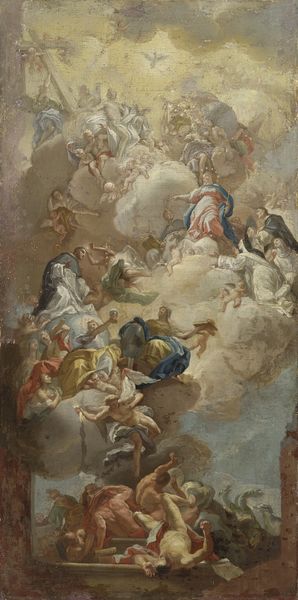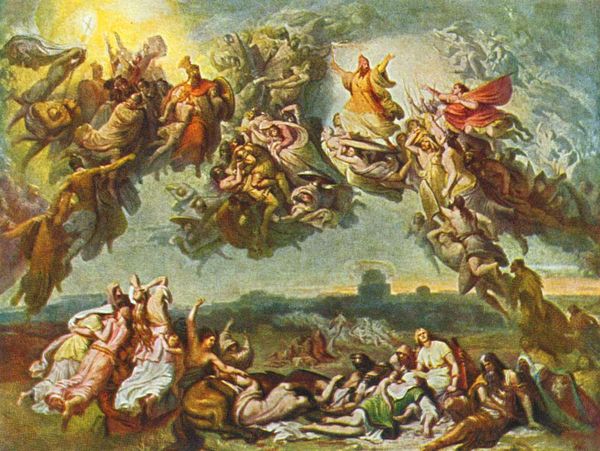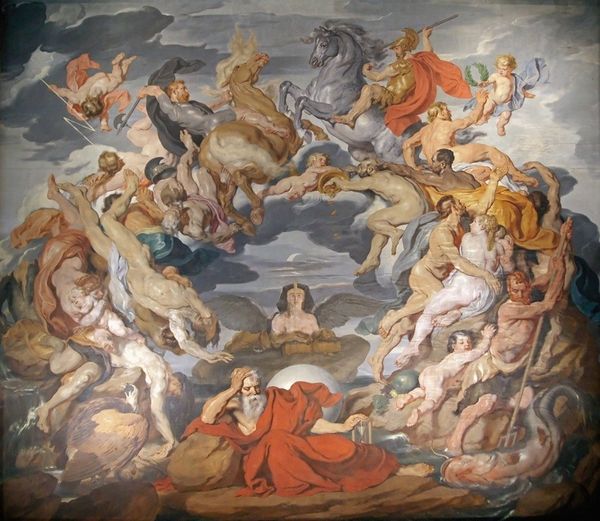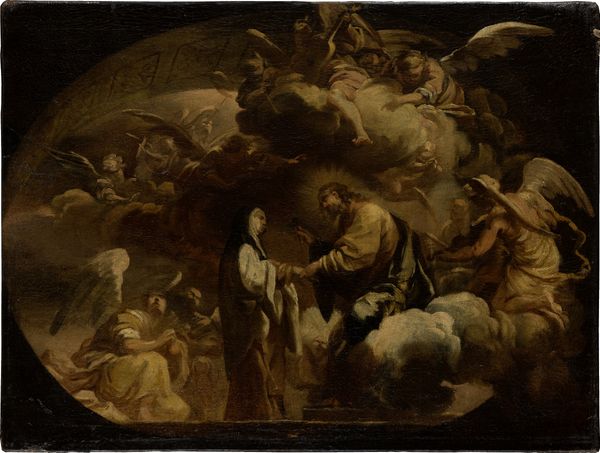
The Four Elements, Preparatory Study for a Painted Ceiling (Allegory of Time_) c. 1750 - 1752
0:00
0:00
oil-paint, pendant
#
allegory
#
baroque
#
oil-paint
#
figuration
#
oil painting
#
history-painting
#
pendant
Dimensions: 48.2 x 70 cm
Copyright: Public Domain
Curator: What strikes me immediately about this oil painting is the absolute frolic of it all! So much joyful dynamism swirling upward. It’s a Baroque party, wouldn't you agree? Editor: Precisely. Here we have Franz Anton Maulbertsch's “The Four Elements, Preparatory Study for a Painted Ceiling (Allegory of Time),” made around 1750 to 1752. It offers an interesting lens through which we can view the relationship between art, power, and architectural design. Curator: Oh, "Preparatory Study," you say? Well, that explains the rawness of it. The energy feels like a captured lightning strike. Like looking straight into the ecstatic chaos before the world was formed! And to think, this raw vitality was meant for a ceiling. Imagine looking up and seeing *this*. Editor: Indeed. Ceiling paintings during the Baroque era weren't merely decorative; they were strategic visual statements, particularly within aristocratic residences or churches. They amplified power, projecting an image of authority and divine connection. Maulbertsch was quite adept at this kind of theatre. Curator: Exactly! Theatre of the sublime! This sketch is ALL feeling, ALL gesture. Those figures aren’t just floating; they're embodying earth, air, fire, and water with every fiber of their… cloud-like forms! And time’s up there, too! Did time need representing back then, like he’d otherwise forget to do his thing? Editor: Well, time is an allegorical figure in the form of an old, winged man, representing the fleeting nature of earthly existence. The ceiling functions as a vanitas reminder amid worldly grandeur. Furthermore, the patronage of such works often solidified social and political bonds; it visually underscored hierarchies of class and influence. Curator: It's a high-minded game of show-and-tell then, using a dizzying spectacle of cherubs and well-placed lightning bolts to keep the social order… in order. Still, even knowing that, I find myself moved by Maulbertsch's commitment to… messiness! Look at how the colors bleed and blend. It's a painting about the elements made of the elements of painting. Editor: It’s an artifact reflecting an era’s values and power structures—a vibrant tableau illustrating Baroque sensibilities while hinting at the forces shaping artistic production in that epoch. Curator: It reminds me that even grand pronouncements are built from chaos and artistry and feeling… and a hefty dose of trying to keep up appearances! Editor: And hopefully provides our visitors with a broader awareness of the artistic and institutional practices of the time!
Comments
No comments
Be the first to comment and join the conversation on the ultimate creative platform.
